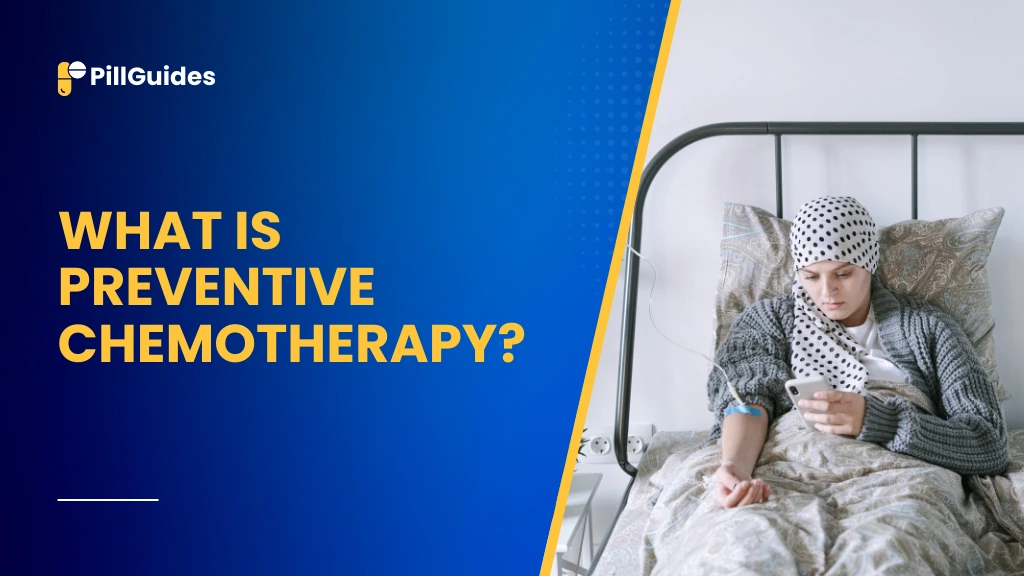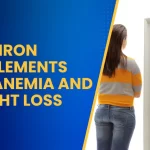The large-scale preventive chemotherapy approach provides strategic treatment to control parasitic infections in highly endemic areas. The periodic delivery of protected yet effective drugs to populations at high risk maintains control and elimination of parasitic health conditions.
The World Health Organization (WHO) recognizes preventive chemotherapy (PC) as a major approach to fighting neglected tropical diseases (NTDs) including lymphatic filariasis, soil-transmitted helminthiasis, and schistosomiasis. Mastery of preventive chemotherapy principles and therapeutic processes allows us to see its vital role in improving healthcare results worldwide.
This guide explores preventive chemotherapy benefits, implementation processes, and challenges followed by practical application recommendations.
What Is Preventive Chemotherapy?
Preventive chemotherapy describes the systematic mass distribution of medicine needed to treat entire demographic populations or specific high-risk groups for parasitic diseases. Compared to cancer chemotherapy techniques, preventive chemotherapy directs its focus on parasite diseases, operating before symptoms develop rather than responding to current issues.
The main goal of preventive chemotherapy is to:
- Reduce the burden of parasitic infections.
- Prevent severe health complications caused by these diseases.
- Support global efforts to eliminate neglected tropical diseases.
Diseases Addressed by Preventive Chemotherapy
Preventive Chemotherapy is especially effective in controlling the following neglected tropical diseases (NTDs):
1. Lymphatic Filariasis
Elephantiasis causes pain and severe disfiguring conditions. Preventive chemotherapy simultaneously blocks disease transmission and suppresses condition progression.
2. Soil-Transmitted Helminthiasis (STH)
Children with roundworms, whipworms, and hookworms commonly develop malnutrition, leading to anemia. With preventive chemotherapy, successful treatments reduce worm populations and their connected medical issues.
3. Schistosomiasis
This parasitic waterborne infection causes harm to the urinary and digestive organs. The distribution of praziquantel medication at scale operates to manage disease activity in regions where it occurs.
4. Onchocerciasis (River Blindness)
Ivermectin-based preventive chemotherapy helps prevent eye damage from parasitic worms that are the source of onchocerciasis.
5. Trachoma
Preventive chemotherapy operates in conjunction with additional practices for reducing cases that mostly stem from bacterial infections.
Benefits of Preventive Chemotherapy
Preventive chemotherapy offers benefits that surpass personal health gains by positively affecting community health as well. Key advantages include:
- Reduction in Morbidity: Preventive chemotherapy reduces parasite numbers throughout the body and thus helps reduce the intensity of diseases along with their extended medical complications.
- Improved Quality of Life: People with better health results in students who can continue with their education along with maintaining employment and helping build stronger communities because of their increased productivity.
- Interrupting Disease Transmission: During regular mass drug administration (MDA) programs parasites experience interrupted life cycles which prevents their transmission throughout communities.
- Cost-Effectiveness: Preventive chemotherapy offers cost-efficient intervention that provides major health benefits while working optimally for resource-constrained communities.
- Progress Toward Disease Elimination: Preventive chemotherapy helps achieve global goals to eliminate NTDs because it identifies diseases at their origins.
How Preventive Chemotherapy Works
A comprehensive preventive chemotherapy system includes various steps designed for both protective quality and safety purposes. Here’s how it works:
1. Identifying High-Risk Populations
Health authorities select geographic areas that demonstrate high levels of NTDs for their detection programs. Rural areas together with impoverished communities make up these target locations.
2. Mass Drug Administration (MDA)
Albendazole as well as ivermectin praziquantel and diethylcarbamazine (DEC) medications are supplied to the populations that need treatment. These drugs are:
- Safe for mass use.
- Effective against specific parasites.
- Administered in single doses.
3. Annual or Biannual Dosing
The correct dosage of drugs results in parasitic infection control measured by disease-specific periodic drug administration in communities.
4. Monitoring and Evaluation
Public health staff determine program effectiveness through assessments that include tracking disease levels and treatment coverage rates as well as community member opinions.
5. Integration with Other Health Interventions
The most effective results appear when preventive chemotherapy programs implement strategies to improve sanitation alongside hygiene measures and enhanced water access.
Side Effects of Preventive Chemotherapy
While preventive chemotherapy drugs are generally safe, some individuals may experience mild side effects, including:
- Nausea and Vomiting
- Dizziness or Headaches
- Abdominal Pain or Discomfort
- Mild Allergic Reactions (very rare)
Patient-reported side effects from preventive chemotherapy drugs become minimal and disappear within one day. All public health programs actively teach communities about these likely effects to help people understand and follow prevention guidelines.
Preventive Chemotherapy Guidelines by WHO
The World Health Organization created extensive guidelines that define how preventive chemotherapy should be organized worldwide in a standardized fashion. These guidelines emphasize:
- Target Groups: Children and reproductive-aged women and marginalized communities who live within endemic areas require targeted delivery.
- Drug Dosages: The treatment plans must include age- and weight-adapted drug amounts to guarantee both safety and treatment effectiveness.
- Program Monitoring: Organizations perform regular assessments that assess how drugs perform how recipients interact with the program and the number of people affected by the disease.
Challenges in Implementing Preventive Chemotherapy
While the approach has documented positive results the execution of preventive chemotherapy encounters multiple hurdles. Key obstacles include:
- Logistical Barriers: Visiting distant areas that have minimal medical systems remains a major implementation challenge.
- Drug Resistance: The prolonged medical application of antiparasitic drugs creates resistance that weakens their medication power.
- Community Acceptance: Public misunderstanding combined with limited community awareness reduces the participation rates in mass drug administration programs.
- Resource Constraints: For sustained long-term success both sustained funding and adequate resources need proper attention because they play vital roles.
Future Directions for Preventive Chemotherapy
Preventive chemotherapy needs both innovative techniques alongside integrated approaches with other public health tools for its future survival. Promising developments include:
- New Drug Formulations: Scientists are working to create potent new medicines against various parasites that require broad antiparasitic effects.
- Digital Health Tools: Mobile application technology combined with data analytical methods enables optimal MDA campaign execution through remote monitoring.
- Community Education: Raising public knowledge will improve both acceptance rates and enrollment numbers in these programs.
- Global Partnerships: Sustainable funding and implementation depend on continuing governmental and international NGO and organization partnerships.
Conclusion
Preventive chemotherapy works as a significant public health intervention that has radically advanced the parasitic infection control efforts in communities that need it most. The intervention stands as a vital implement for battling neglected tropical diseases because it blocks disease passage and advances health results while assisting worldwide elimination initiatives.
The combination of innovation international collaboration and community-based involvement enables preventive chemotherapy to develop new milestones that define a parasite-free world.
Disclaimer
This blog is for informational purposes only and is not a substitute for professional medical advice. Always consult a healthcare provider for personalized recommendations.
Read More: Chemotherapy vs Radiation: Understanding the Key Differences and Benefits
FAQs What Is Preventive Chemotherapy
1. What is preventive chemotherapy?
Through preventive chemotherapy, doctors distribute medicine to treat parasitic diseases within high-risk communities.
2. What medical conditions does preventive chemotherapy specifically treat?
The program fights diseases such as lymphatic filariasis and schistosomiasis in addition to soil-transmitted helminthiasis and onchocerciasis.
3. When do health organizations schedule preventative drug treatments?
These drugs need administration either once a year or every other year based on the targeted disease.
4. Are preventive chemotherapy drugs safe?
Mass distribution of these treatment drugs poses no safety concerns while producing minimal adverse effects.
5. Why is preventive chemotherapy important?
Preventive chemotherapy performs three key functions in public health by decreasing disease occurrence while improving patient quality of life and supporting worldwide efforts to eliminate neglected tropical diseases.










